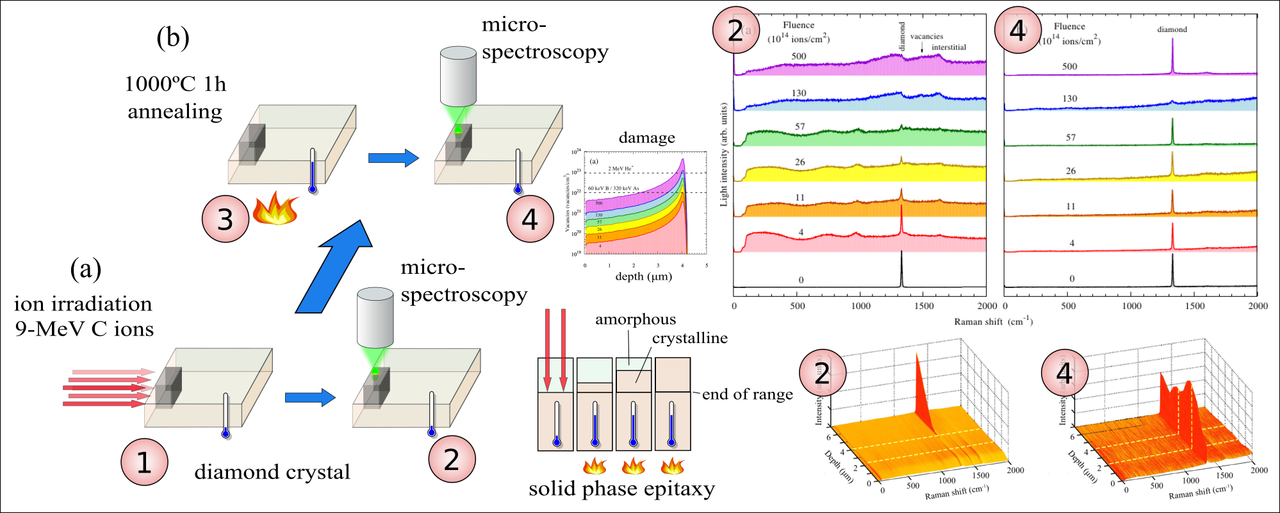 F. Agulló-Rueda, N. Gordillo, M. D. Ynsa, A. Maira, J. Cañas, and M. A. Ramos, “Lattice damage in 9-MeV-carbon irradiated diamond and its recovery after annealing,” Carbon , accepted (2017).
F. Agulló-Rueda, N. Gordillo, M. D. Ynsa, A. Maira, J. Cañas, and M. A. Ramos, “Lattice damage in 9-MeV-carbon irradiated diamond and its recovery after annealing,” Carbon , accepted (2017).
We have studied the radiation damage in diamond as a function of layer depth upon self-ion implantation with 9-MeV carbon ions and its recovery after annealing at 1000°C. Raman and photoluminescence spectra show substantial damage of the lattice, namely, amorphization, neutral vacancies, and interstitial defects. Damage is maximum in the stopping layer at a depth of 4 μm. After annealing there is some recovery of the lattice, but the residual damage increases with fluence, up to about 2 × 1016 ions/cm2. At this fluence the stopping layer becomes highly disordered and does not heal with annealing. Surprisingly, for higher fluence values, of about 5 × 1016 ions/cm2, there is almost no residual damage. After full amorphization is reached, the layers appear to recrystallize by solid phase epitaxy (SPE), using the pristine diamond layers underneath as a template. These results prove that graphitization of diamond after annealing can be avoided in deeply buried layers, implanted at fluences much higher than expected. High fluences, in fact, can lead to high quality diamond layers. If SPE can be confirmed, it would have a great interest for diamond device applications, as it allows for higher doping levels.
